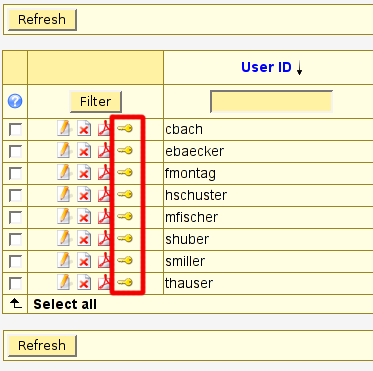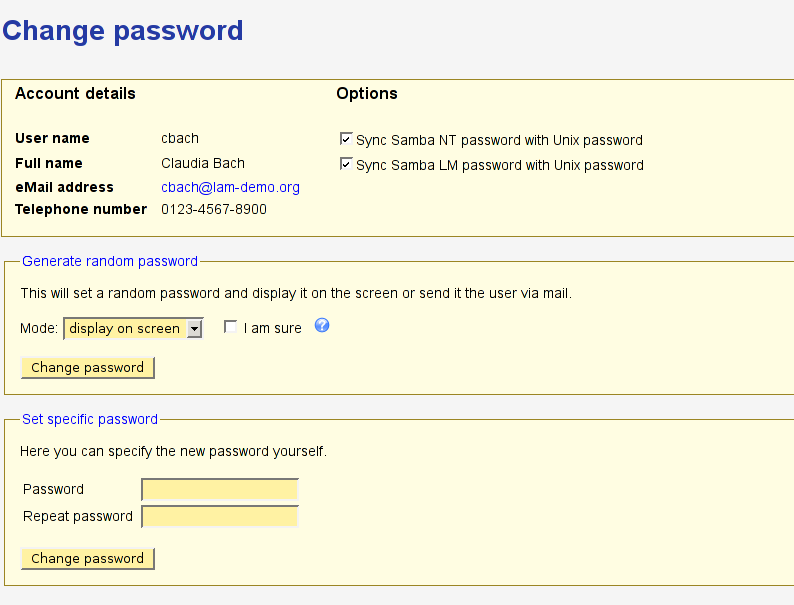This special page allows your deskside support staff to reset the Unix and Samba passwords of your users. If you set the access level to "Change passwords" then LAM will not allow any changes to the LDAP database except password changes via this page. The account pages will be still available in read-only mode.
You can open the password reset page by clicking on the key symbol on each user account:

There are three different options to set a new password:
set random password and display it on screen
This will set the user's password to a random value. The password will be 11 characters long with a random combination of letters, digits and ".-_".
You may want to use this method to tell users their new passwords via phone.
set random password and mail it to user
If the user account has set the mail attribute then LAM can send your user a mail with the new password. You can change the mail template to fit your needs. See the help link for further details.
Using this method will prevent that your support staff knows the new password.
set specific password
Here you can specify your own password.

LAM will display contact information about the user like the user's name, email address and telephone number. This will help your deskside support to easily contact your users.
If a user account has Samba passwords set then LAM will offer to synchronize the passwords.